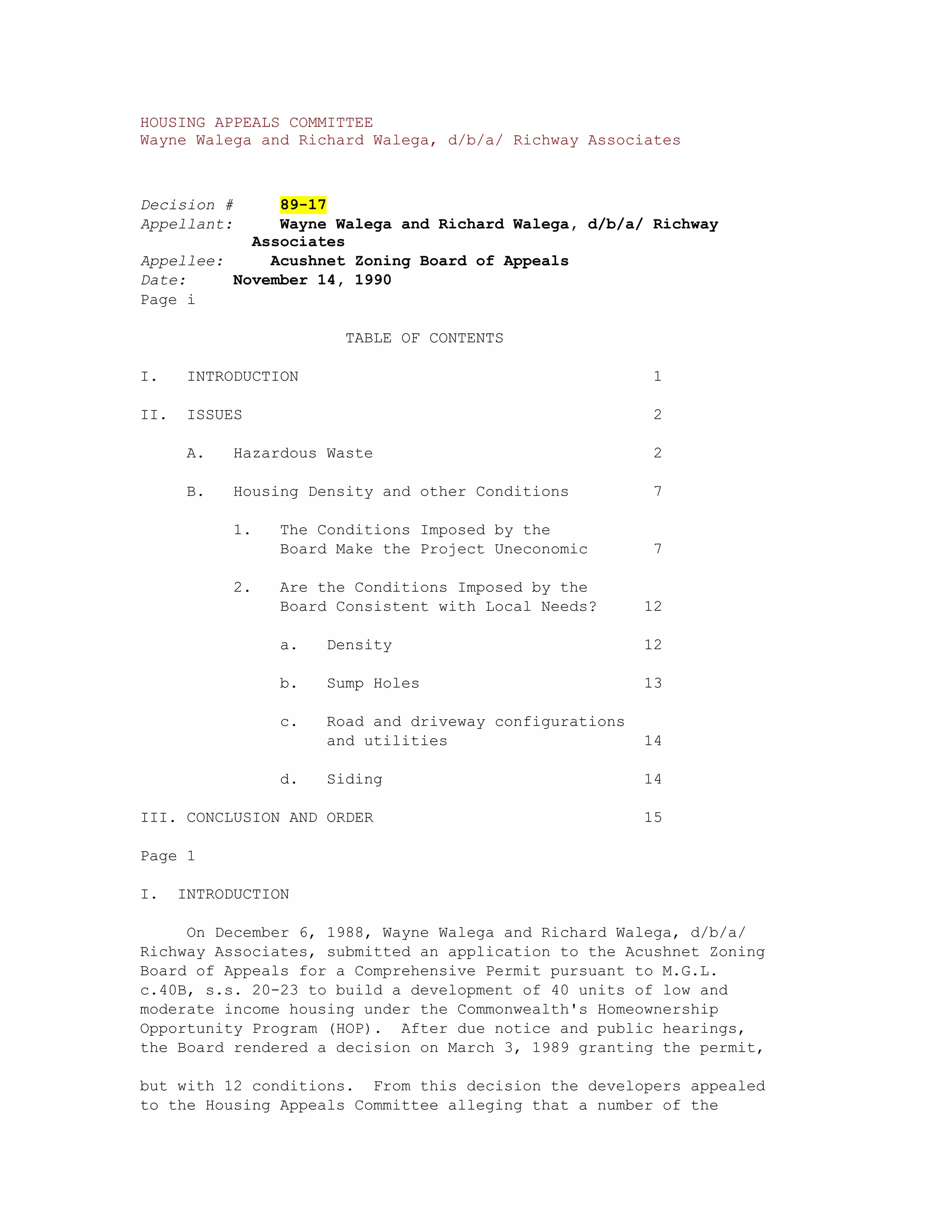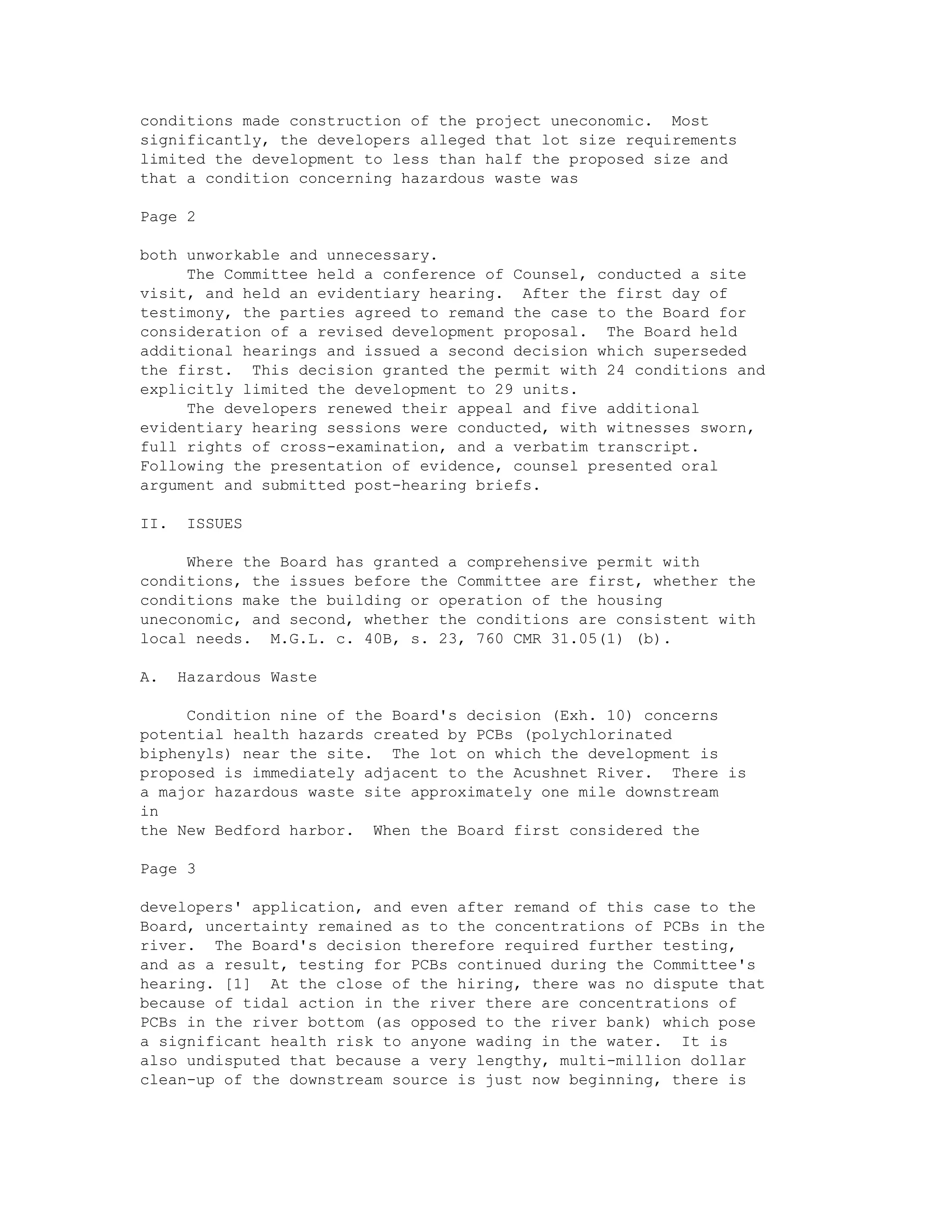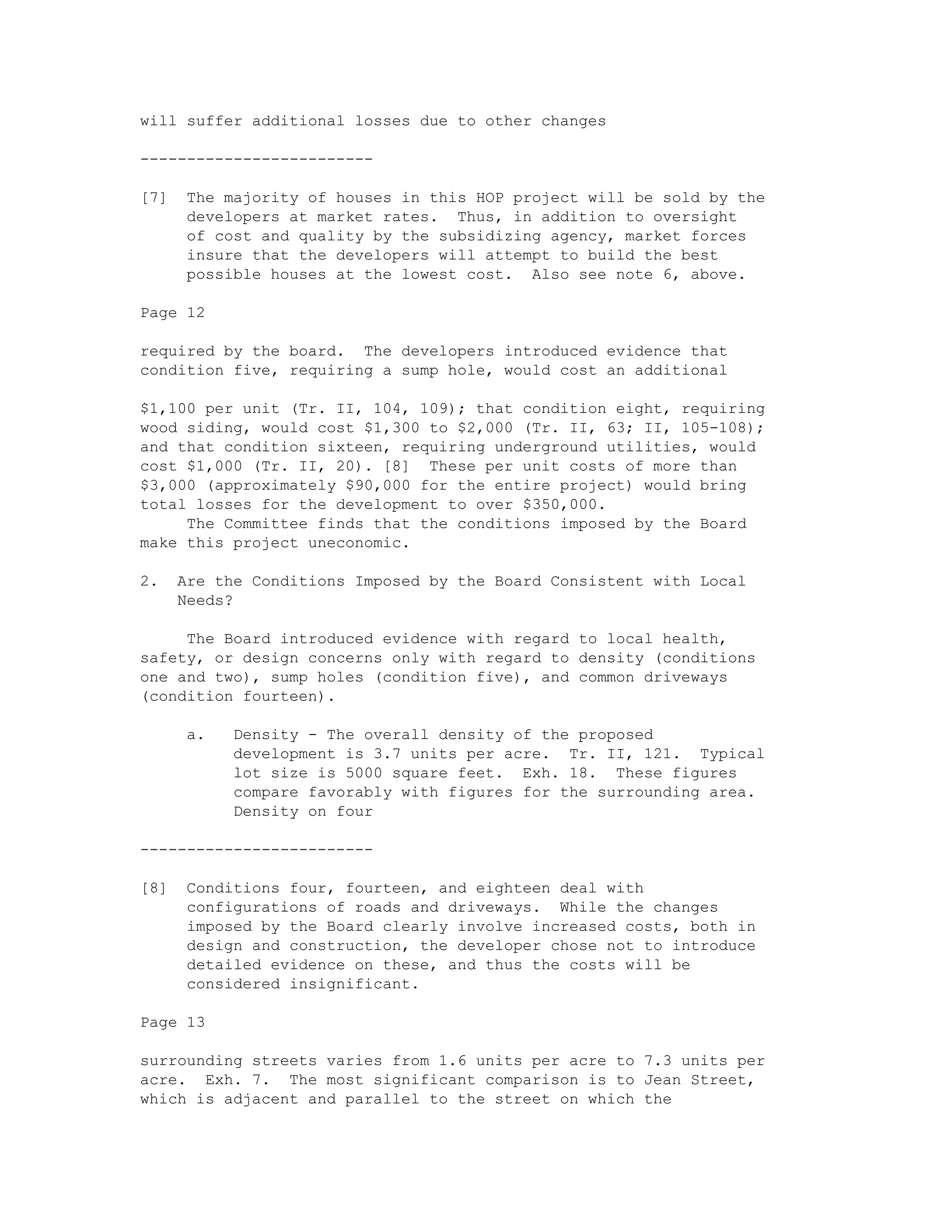Embed presentation













The Housing Appeals Committee reviewed a decision by the Acushnet Zoning Board of Appeals regarding a comprehensive permit application to build 40 units of affordable housing. The zoning board granted the permit with conditions, including limiting the development to 29 units. The developers appealed, arguing several conditions made the project uneconomic. After extensive testimony and evidence presented over multiple hearings, the Committee found that limiting the development to 29 units would result in a $278,000 loss, making the project uneconomic. However, the Committee also recognized a legitimate health concern regarding contamination in the adjacent river. Therefore, the Committee modified one condition to require a fence along the riverbank rather than prohibiting development.












